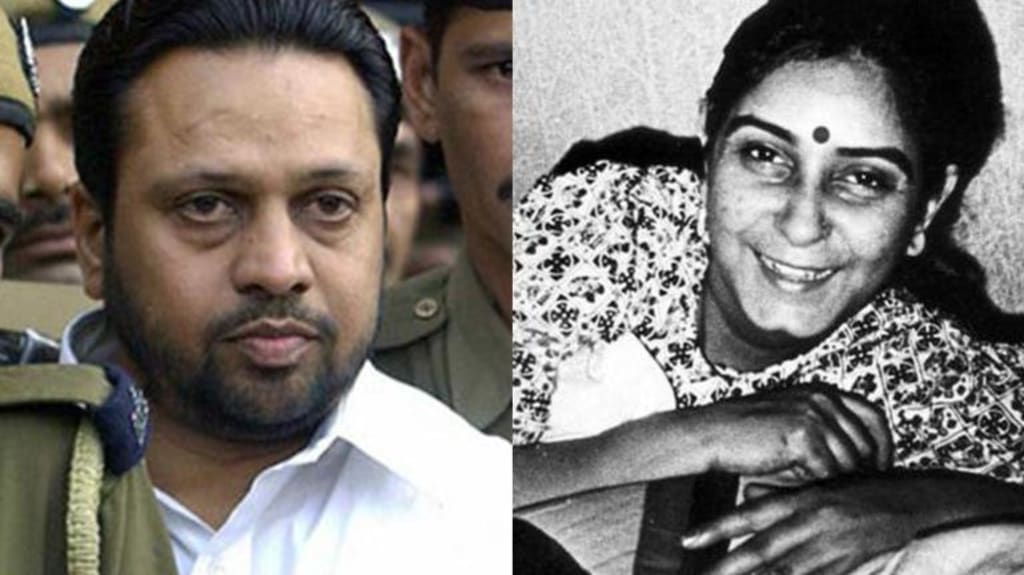Content warning
This story may contain sensitive material or discuss topics that some readers may find distressing. Reader discretion is advised. The views and opinions expressed in this story are those of the author and do not necessarily reflect the official policy or position of Vocal.
The Tandoor Murder Case: A Tale of Horror, Betrayal, and Justice
The Gruesome Crime That Shook India

In the heart of New Delhi, amidst the bustling life of 1995, a horrific crime unfolded that would shock the nation to its core. The Tandoor murder case, a tale of unimaginable betrayal and brutality, left an indelible mark on India’s collective consciousness.
The Background
Naina Sahni was a vibrant, ambitious young woman, married to Sushil Sharma, a charismatic politician on the rise within the Indian National Congress. Despite his public charm, Sushil’s private life was marred by paranoia and possessiveness. Their marriage, which started with promise, soon turned into a nightmare of suspicion and control, with Sushil increasingly obsessed with the idea that Naina was being unfaithful.
The Crime
On the fateful night of July 2, 1995, Sushil Sharma’s jealousy reached a terrifying climax. Convinced that Naina was having an affair with a fellow politician, Sharma confronted her at their residence. The argument quickly escalated into violence. In a moment of uncontrollable rage, Sushil Sharma shot Naina, killing her instantly.
The sight of Naina’s lifeless body filled Sharma with panic. Desperate to dispose of the evidence, he devised a horrific plan. He wrapped Naina’s body in a bedsheet, loaded it into his car, and drove to a popular restaurant in Delhi, owned by a friend and political associate. The restaurant featured a large tandoor, a traditional clay oven used for baking, which Sharma intended to use to incinerate Naina’s body and erase all traces of his crime.
The Gruesome Discovery
Late that night, Sharma arrived at the restaurant with Naina’s body. Under the guise of a late-night errand, he convinced the unsuspecting staff to assist him, not realizing the true nature of the bundle they were helping with. As they began burning the body in the tandoor, the intense heat and unusual smell quickly attracted attention.
A constable on night patrol nearby noticed the unusual activity and the acrid smell of burning flesh. His suspicion aroused, he decided to investigate. The scene that greeted him was straight out of a horror movie – the tandoor, a blazing inferno, emitting a nauseating stench, and the half-burnt remains of Naina Sahni partially visible amidst the flames.
The constable immediately called for backup. The police arrived swiftly, arresting the restaurant staff and launching a manhunt for Sushil Sharma, who had fled the scene. The discovery was gruesome beyond belief – charred bones, melted flesh, and the remnants of Naina’s clothing formed a ghastly mosaic of horror.
The Investigation
The police quickly identified the body as Naina Sahni, and an intense manhunt for Sushil Sharma ensued. The case drew massive media attention, both for the brutality of the crime and the high-profile nature of the individuals involved. Sharma managed to evade arrest for several days, traveling across various states to avoid capture.
During this period, the media dubbed the incident the "Tandoor Murder Case," emphasizing the gruesome nature of the crime. The sensational details and the involvement of a politician added layers of intrigue and public interest.
The Arrest and Trial
Sushil Sharma was eventually apprehended on July 10, 1995, in Bangalore. His arrest marked the beginning of a lengthy legal battle. The trial revealed shocking details about Sharma's jealousy, paranoia, and the premeditated nature of the murder. The prosecution built a strong case, supported by forensic evidence and eyewitness testimonies.
In 2003, after years of legal proceedings, Sushil Sharma was convicted of murder and sentenced to death by a trial court. The verdict was seen as a significant victory for justice, given the brutal and calculated manner in which the crime was committed. However, Sharma appealed the decision, and the case continued to navigate through India's complex judicial system.
The Supreme Court's Verdict
In 2013, the Supreme Court of India commuted Sharma's death sentence to life imprisonment. The court cited mitigating factors, including the prolonged duration of the trial and the psychological impact of long-term imprisonment, as reasons for the commutation. The decision sparked a debate on the appropriateness of the punishment, with many arguing that the heinous nature of the crime warranted the death penalty.
The Legacy
The Tandoor murder case remains etched in India's collective memory as a grim reminder of the depths of human depravity and the importance of an unwavering judicial process. It highlighted the potential for abuse of power and privilege, and the critical need for timely and effective law enforcement.
The case also underscored the role of media in shaping public perception and the pursuit of justice. The relentless coverage ensured that the crime did not fade into obscurity and kept the pressure on the authorities to deliver justice.
Conclusion
The Tandoor murder case is a tragic tale of betrayal, murder, and the relentless pursuit of justice. It serves as a stark reminder of the fragility of human relationships and the devastating consequences of uncontrolled rage and jealousy. While Naina Sahni's life was brutally cut short, the subsequent legal battle and public outcry ensured that her story would not be forgotten. Through the darkness of this case, the enduring light of justice and accountability continues to shine.
About the Creator
SaurabhK
I am a versatile writer passionate about crafting gripping crime fiction and insightful real crime articles. 🕵️♂️📖 I also explore culinary delights, uncovering flavorful experiences that celebrate the artistry of chefs. 🍽️🍷
Enjoyed the story? Support the Creator.
Subscribe for free to receive all their stories in your feed. You could also pledge your support or give them a one-off tip, letting them know you appreciate their work.






Comments (2)
This is so sad and heartbreaking. Thank you for sharing this story - I had no idea.
Horrible crime....well written.....